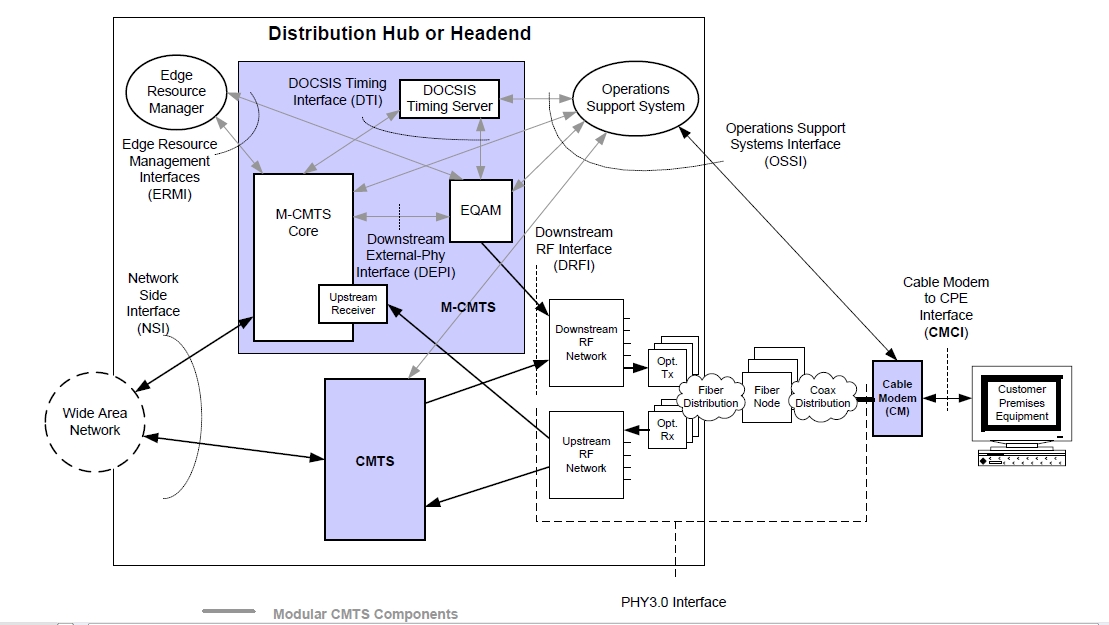120 Mbps upstream? Even 30 Mbps? Come on- who really needs it?

Note: I've amended this post with corrective information, including this from our networking guru, George Ou. George,an actual engineer, points out:
You cannot claim DOCSIS 3.0 is 160/120 down/up service and compare it to 50/30 down/up FiOS service. That is grossly misleading. 160/120 down/up in DOCSIS 3.0 is a SHARED pipe for up to 400 homes. FiOS "1.0" operates at 622/155 down/up as a shared fiber between up to 32 homes. The net version of FiOS can easily 2.4 and eventually 10 gbps and beyond. They can even go to 10 gbps/user by using a separate wavelength of light if they so choose.
Furthermore, it's doubtful they'll give you a DOCSIS 3.0 cable modem with a Gigabit Ethernet link so realistically the burst speed with be less than 100 mbps IF and only IF you're the only user in that entire neighborhood.
The most important aspect of FiOS is its massive bandwidth capacity. The current implementation of FiOS uses a technology called BPON (Broadband Passive Optical Networking) which offers 622 mbps of total down-stream and 155 mbps up-stream bandwidth split amongst 32 homes for Internet access and the current premium FiOS Internet service caps users to 50 mbps down-stream for burst speed. FiOS TV broadcasts come over a separate wavelength using a technology called GPON (Gigabit Passive Optical Networking) which supports 2.4 gbps down and 1.2 gbps up. Since it's a broadcast technology, the downstream doesn't have to be split amongst 32 homes so it can offer a massive number of high-quality video broadcasts to every home. Video-on-demand on the other hand requires a unicast technology and that's delivered using IPTV technology over the BPON data channels.
Currently, every FiOS home has two high-speed streams on two separate wavelengths over a single fiber delivering BPON and GPON which is more than enough for the near-term. But fiber to the home can just as easily support 10-GPON which is ten times faster than today's gigabit PON technology and the price of 10-GPON transceivers will inevitably come down in the future.
Because FiOS architecture runs a single-mode optical fiber out to the neighborhood and then uses an optical splitter to connect up to 32 homes, bandwidth is divided up 32 ways.
That's fine for today's applications in the near term but it may not be in the future so when more bandwidth to each home is needed, 32 separate wavelengths of light can be used and each home would use its own dedicated wavelength. That means it would be possible to deliver more than 10 gigabits of dedicated bandwidth to each and every FiOS enabled home making fiber to the home the ultimate long-term investment.
Thx, George. I now consider myself both corrected, and additionally educated on these issues.
Now here's kind of what I originally wrote in this post:
OK, so Comcast announced on Friday it fully itends to deploy a DOCSIS 3.0 infrastructure in 2008, with 20% system-wide availability by EOY 2008.
Such deployment, at least in theory, would provide aggregate neighborhood transfer rates of up to 160Mbps down and 120 Mbps upstream.
Oh, and that would make Verizon FiOS shoots for 50Mbps down/30Mbps up s-l-o-w in comparison.
Time for a reality check here, people.
How many of us really need 160/120 Mbps in our hood? Or even 50/30? in our home?
If we don't talk about enterprise users/usage, I can only think of two groups who really need all that capacity: especially upstream:
Hard-core gamers.
Hard-core video creators.
When I talk about hard-core video creators, I am not talking about those of you (and occasionally 'tis I) who upload videos to YouTube.
I'm talking about folks that shoot in High-Def, and then send scads of full .avi's to clients.
But even then. I have a high-def DV cam, and if I was to forward five minutes of HD to a client, the difference between the upstream speeds I am able to get now via C0mcast's current capabilities vs. what would be enabled via DOCSIS 3.0 would only amount to a couple of minutes at most.
I can spare the two or three minutes (if that). And if you conduct a self-assessment of your own bandwidth capacity needs, betcha you could, as well.
